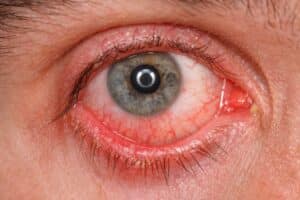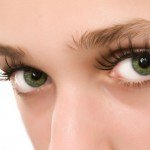In part I of this series, I wrote about why Repatha should be pulled from the marketplace. In that article, I showed you that both Repatha and the fake placebo used in the study were both associated with nearly 25% serious adverse effects including hospitalization, death, and disability. Recall that in the fake placebo, polysorbate 20 was a main ingredient. I surmised that perhaps the high rate of serious adverse effects in the fake placebo was due to the polysorbate 20. Please refer to my original blog from May 3rd, 2019 “New Cholesterol-Lowering Medications Associated with 25% SEVERE Adverse Effects!”
Polysorbate is used widely in medicines as a dispersing agent—it helps the medicine absorb better. Polysorbate 80 is also found in many vaccines. As I will show you in this post, similar to polysorbate 20, polysorbate 80 has not been properly studied–especially as an injectable agent.
The Powers-That-Be state that vaccines are safe and effective. To make the ‘safety’ claim, one would think that there must be many studies on the safety of injectable items before they are allowed to come to market. If the FDA, CDC, and HHS were doing their jobs, there would be appropriate safety studies on injectable ingredients. However, for over 25 years, I have been writing about the failure of our Governmental agencies to oversee The Big Pharma Cartel. This colossal failure is a large part of why we are spending so much money on health care yet we continually rank last (or next to last), when compared to other Western countries, on every health indicator according to the WHO.
POTUS ran on a platform of draining the swamp. So far, the health care swamp hasn’t been drained. In fact, it is enlarging and getting worse. POTUS’ appointments to CDC, HHS, and FDA have ALL been swamp insiders who know how to promote Big Pharma’s agenda.
But, I digress. Let’s get back to Part II of this series; the connection between the toxic effects of Repatha and vaccines.
Polysorbate 80, found in many vaccines, is a very similar substance to Polysorbate 20 and the MSDS sheet reads similarly. Unbelievably, Polysorbate 80 is found in many vaccines that are mandated not only for our children but for adults as well. Perhaps we are seeing an epidemic of childhood illnesses because of the overload of toxic products found in vaccines.
Section 11 of the Material Safety Data Sheet for polysorbate 80 states, “May cause reproductive effects based on animal test data. No human data found. May cause cancer based on animal test data. No human data found. May affect genetic material (mutagenic).”[i]
The Vaccine Link
Even though it has not been properly tested, Polysorbate 80 is used in many vaccines including:
- DTaP (Infanrix);
- DTaP—IPV (Kinrix);
- DTap-HepB-IPV (Pediarix);
- DTaP-IPV-Hib (Pentacel);
- Gardasil
- Influenza (Agriflu);
- Influenza (Fluarix);
- Meningococcal (MenB-Trumenba);
- Pneumococcal (PCV13—Prevnar13);
- Rotavirus (RotaTeq);
- Tdap (Boostrix)5
Animal studies have shown that injecting polysorbate 80 can cause reproductive problems including damage to the ovaries and uterus[ii].
As I previously state, polysorbate is a substance that helps to disperse or dissolve chemicals. In the case of vaccines, Polysorbate 80 is used to help the vaccine bypass the blood brain barrier. The blood brain barrier is necessary to keep dangerous substances in the blood stream from damaging the central nervous system. With vaccines, polysorbate 80 allows the ingredients in a vaccine to penetrate the brain. Since vaccines contain viral and bacterial components as well as toxic metals (such as mercury and aluminum) along other nefarious ingredients, why would anyone think that injecting polysorbate 80 into a human being, much less a child who has a poorly developed blood brain barrier, is acceptable? Once injected, polysorbate 80 can break down into sorbitol and ethylene oxide. Sorbitol, according to the National Institutes of Health (NIH) is not to be injected (under drug warnings[iii]). The Centers for Disease Control and Prevention (CDC) have found evidence of carcinogenicity (promoting cancer) with ethylene oxide exposure.[iv] Ethylene oxide is associated with reproductive effects in mammals as well as leukemia in female rats and malignant tumors in male rats.
Is it safe to inject any human, much less a baby, with either polysorbate 20 or 80?
No!
This may explain why nearly 25% of those in the Repatha study—in BOTH the treatment and ‘placebo’ groups which both had polysorbate in them–suffered a “serious” adverse event. In the case of vaccines, there should be studies that prove that polysorbate 80 is safe to inject. There are not. In fact, there are studies that show problems with injectable polysorbate (see part I of this series).
If I am wrong here and it is not polysorbate then there is something else in both the Repatha group and the placebo group causing 25% to suffer from a serious adverse effect.
To those that criticize me as an anti-vaxxer, please show me a study (there should be numerous studies) that proves polysorbate is safe to be injected.
Big Pharma is using us as a great experiment. So far, the experiment is not going well. Our kids are sicker than ever. It is time for the pro-vaxxers out there to stop parroting the vaccines are safe mantra when they have not been properly studied for safety.
Vaccines are safe? Repatha is safe? There is no difference between the Repatha and the placebo groups in regards to adverse events? Somebody, show me the studies. How do you make those claims when the appropriate safety studies have NOT BEEN DONE! Cholesterol lowering medications and vaccines are safe? Let me answer that with a quote from Clara in the old Wendy’s ads: “Where’s the beef?”
~ Dr B

[i]http://www.rexler.com/wp-content/uploads/2015/09/Polysorbate-80-MSDS.pdf
[ii] Food Chem Toxicol. 1993 Mar;31(3):183-90.
[iii] https://toxnet.nlm.nih.gov/cgi-bin/sis/search2/r?dbs+hsdb:@term+@rn+50-70-4
[iv] https://www.cdc.gov/niosh/docs/81-130/default.html https://www.cdc.gov/niosh/docs/81-130/



 (
(